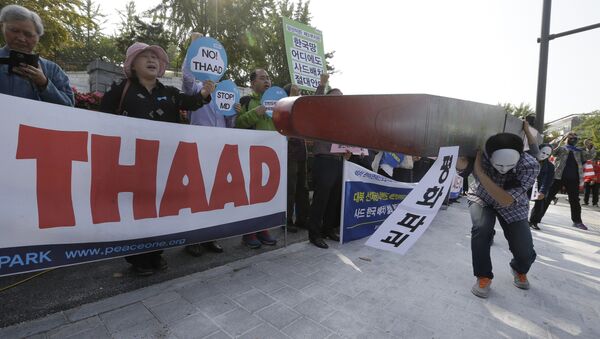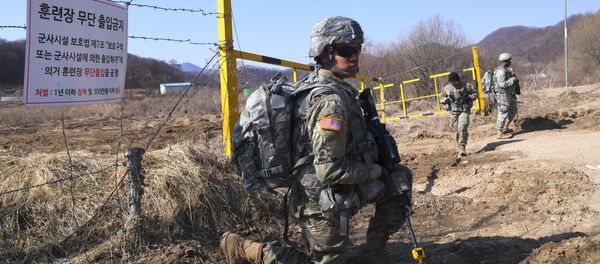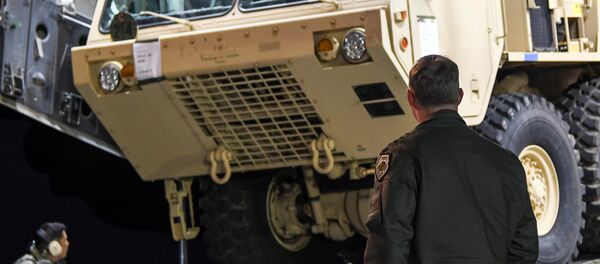Realizing that the DPRK will not abandon the development of its nuclear program, the US has made a “strategic turn” from the denuclearization of the Korean peninsula to the deployment of THAAD, thereby dragging South Korea into a deep abyss by trying to win the competition with China.
In an interview with Sputnik, South Korean security experts commented on the effectiveness and feasibility of THAAD in terms of defense and strategic interests of South Korea.
Kim Dongyeop, professor of the Institute for Far Eastern Studies at Kyungnam University, said that, “THAAD is a nail that the US-Japan alliance is hammering into Korea.”
He further said, “In cooperation with Japan the US is trying to prevent China's advances towards the ocean and in that process they are preventing Korea from taking any sort of disadvantageous position by placing the missile systems. It is quite obvious that this is not a simple military problem.”
Yun Hojung, the head of the policy committee of the Minjoo Party of Korea, said that it is becoming quite obvious that neither the US nor China are considering Korea’s stance on this matter.
Another member of the National Assembly of Korea, Sim Jaegwon, raised an important point by saying that it is important to think about the feasibility of this move.
“We must return to the question of how important is the US missile defense to us, to what extent is it needed and is this really the only way to fight the North Korean nuclear threat,” Jaegwon said.
Dongyeop noted that the US admits that THAAD systems are ineffective at missile ranges of under 1,000 kilometers.
According to him, THAAD interception tests were conducted 13 times but Lockheed Martin Corp. has not reported about the range of the missiles used.
Similarly, Jeong Uksikm a representative of Peace Korea, said, “In order to demonstrate the possibility of an interception we need to ask the DPRK to launch a missile during clear weather at an altitude of 40 to 150 kilometers. The tests conducted by Lockheed Martin do not correspond to real conditions and it is clear to everyone that these systems are aimed at protecting against Chinese and Russian missiles.”
Lawmakers from South Korea's Democratic Party have submitted a resolution that calls for upfront parliamentary ratification of the US THAAD deployment in the country, to the National Assembly Tuesday.
According to the resolution, drafted by 29 Democratic Party lawmakers, the country's constitution states that the National Assembly has “the right to consent to treaties pertaining to any restriction in sovereignty or treaties which will burden the state or people with an important financial obligation.”
On March 8, in line with the July 2016 agreement with the United States, components for the THAAD system began to arrive in South Korea, as Seoul wanted the system to be deployed rapidly in response to North Korea's recent missile tests. The move was criticized by neighboring China and Russia as a security threat in the region.





